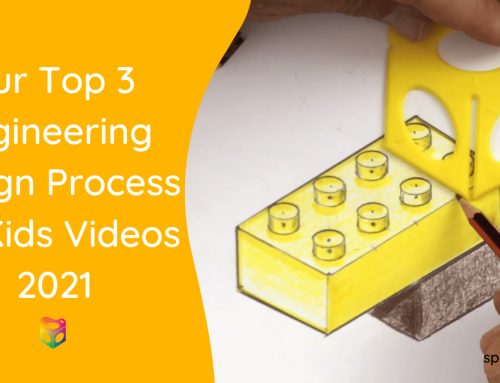DIY Plants in Space Fun Science Experiments for Kids
These science experiments for kids all focus on growing plants in space. The common question is, could humans living in space really grow their own food? This inquiry offers a rich fun narrative and a great way to connect students to cutting edge science, technology and design. We even discovered Tupperware is designing outer space plant PONDS for astronauts!

Kids exploring how astronauts could grow their own food in Space.
For our live YouTube session this week we are helping students design their own scientific equipment. This is all part of a series of fun science experiments for kids on offer from Magnitude.io in partnership with Fizzics Education and the NSW Department of Education’s STEM Industry School Partnerships.
Watch as we draw a plant growth unit. This is a smart device that schools are using for science experiments now. More information about the ExoLab 9 Plant Growth Unit can be found here. Students then build their scientific equipment and conduct experiments. As a result, they can compare their growth with matching units on the International Space Station.

How to Design Science Equipment for Growing Plants in Space.
The fun science experiments for kids outlined are all part of the Australian Virtual Astronaut Challenge – AVA.
Overview of Science Project
Grade: 4 – 8
To support these science experiments for kids, this 6-week challenge is now available. Students will be part of a team on the Moon for the Artemis Program. You need to think about how food can be grown in space and what we should do. Some questions to ask include:
– Should we grow plants?
– What is our goal?
– How big should they be?
– Do we want them to reproduce by themselves or do we want people to take care of them?
Throughout this STEM challenge, students will complete STEM activities as if they were real astronauts. During their virtual mission and will design and complete a series of DIY experiments. Finishing with a 1-minute video pitch of the benefits of their science experiments or design products.
In order to help out, many scientists and engineers have joined together to give students a chance to learn about how plants grow in space. They will teach the students about design considerations for growing plants in space. The students can also create engineering blueprints for their devices/systems and apply their science knowledge gained to creating DIY science experiments.

Available Engineering Design Folio for Teachers and Students.
Engineering Design Process Resources
There are many resources for teachers. Download the Engineering Design Process Worksheets/Folio here. There is also a full schedule of the AVA Challenge on the STEM 2021 homepage via this link. Once you are done, bookmark these links and resources for future opportunities. You should also check out science experiment kits that are available for kids if you have any questions about them!
I would also like to thank the project’s resident scientific illustrator, Gillian Hewitt, The Imaginaturalists. Behind the scenes, Gillian is often called upon to create scientific illustrations. Her work is truly inspirational and students love the mix of imagination and science.

Work by Scientist Gillian Hewitt for the AVA project.
Plants in Space – additional classroom resources
NSW Department of Education – iteachSTEM.com.au This is an excellent unit of work for Stage 2 Extension and Stage 3 students. Available for download here. It is curriculum aligned and well resourced.
NASA – Be sure to check out the winners from the Deep Space Food Challenge to help inspire your students.
https://www.nasa.gov/feature/nasa-astronaut-paints-a-picture-of-success-growing-plants-in-space
https://www.nasa.gov/feature/nasa-tests-ways-to-reduce-stress-in-plants-growing-in-space
https://www.nasa.gov/feature/microgravity-works-wonders-with-plant-transplants
Another great place to find resources is Pinterest. I love this topic I am also creating a new Pinterest Board for teachers keen on exploring this area of design with their students.
Finally, if you would like any further help reach out by;
- Subscribing to our YouTube Channel,
- Joining our Design School for Teachers Newsletter or
- Email us directly anytime.
Design kindly,
Kylie

